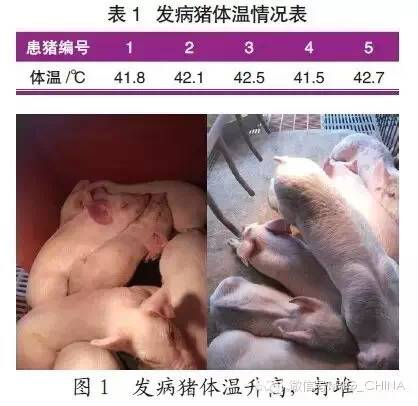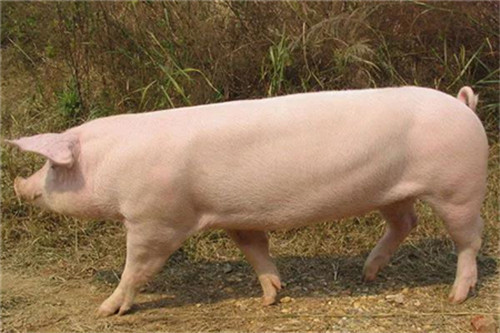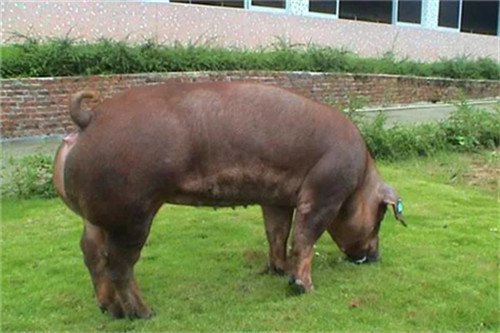"A case of piglet swine fever detailed diagnosis and treatment" process
Classical swine fever, commonly known as "intestinal rotting fever", is an acute, febrile and contagious infectious disease caused by classical swine fever virus of the flavivirus family. It is highly contagious and lethal. Although there is only one serotype of classical swine fever virus (strain C), there is a certain virulence variation of classical swine fever virus in many places, which is due to the high intensity and high density immunity of classical swine fever vaccine in pig farms. The same strain shows different clinical symptoms due to different genetic background, age, nutritional status and immune activity of susceptible animals. There are mainly acute, chronic and mild classical swine fever.
The general clinical manifestations of acute classical swine fever are lying on the heap, hunched back, lethargy, chills and unstable walking, missed fever, and the body temperature is between 40 and 42 ℃. Loss of appetite or abstinence, drinking water, some sick pigs died suddenly, but no obvious symptoms. The author encountered a very typical classical swine fever in piglets in clinic. The diagnosis and treatment process is described as follows for reference.
1 morbidity and clinical symptoms
At the end of November 2014, 200 sows were kept in a pig farm in Bayi Township, Nanchang County. Piglets in the delivery room began to get sick after 10 days of age, and the main symptom was a rise in body temperature of more than 41 ℃, accompanied by diarrhea (yellow), with an incidence of more than 80%. As of December 15 (the day the author rushed to the pig farm), 7 piglets died on the same day, a total of 103 piglets died, with a mortality rate of more than 53%. The piglets in the delivery room were depressed and huddled together. The body temperature of 5 sick pigs was measured on the spot, and the body temperature increased obviously, as shown in Table 1 and figure 1.

2Anatomical lesions
Subcutaneous hemorrhage, severe inguinal lymph node bleeding, obvious mesenteric lymph node bleeding, obvious needle tip bleeding on the surface of kidney, spleen marginal infarction and severe bladder mucosal bleeding. Intestinal mucosal bleeding is obvious (figure 2, figure 3, figure 4, figure 5).
3etiological analysis and diagnosis
3.1 etiological analysis
After asking the head of household, pigs have been sick for a week, sow classical swine fever vaccine immunization procedure is fetal immunity, vaccine choice of ordinary cell vaccine. The swine herd has been very stable in the past, so it is speculated that there may be some problems in the titer of classical swine fever cell vaccine, coupled with loopholes in management, which led to the outbreak of classical swine fever.
3.2 diagnosis
3.2.1 preliminary diagnosis
Inquiring about the incidence and immune procedure of the pig farm, combined with the clinical symptoms and pathological changes of diseased pigs, the preliminary diagnosis of classical swine fever was made.
3.2.2 Laboratory diagnosis
During the autopsy, three samples of disease tissues were taken and sent to the Veterinary Hospital of Jiangxi Agricultural University for RT-PCR diagnosis of classical swine fever antigen. The results were all positive for classical swine fever, as shown in figure 6.
4 processing scheme and result
4.1 Emergency vaccination and immunization program adjustment
The main results are as follows: 1) the whole herd of sows were urgently inoculated with classical swine fever spleen vaccine, 3 portions per sow, and the immunization was strengthened once a month later.
2) the sick piglets in the delivery room were urgently inoculated with classical swine fever splenic gonorrhea vaccine, 3 portions per piglet.
3) the newborn piglets were super-immunized (lasted for 1 month). The newborn piglets were vaccinated with 1 dose of classical swine fever spleen vaccine, once at the age of 28 days and once at the age of 63 days.
4.2 strengthen feeding management
Do a good job in the heat preservation and ventilation of the delivery room, and keep the fence dry. The piglets were given drinking water with amoxicillin soluble powder and high-grade multivitamin to control secondary infection.
4.3 processing result feedback
On December 16, 2014, when classical swine fever was diagnosed in the laboratory, we immediately called the pig farm owner and asked to follow programs 4.1 and 4.2 above. On December 20, the death rate decreased after a return visit by telephone. On December 27, the telephone continued to return, there were no new cases, and the pig herd began to stabilize. January 10, 2015, a return visit to the pig farm, entered the field to understand the health of pigs, production has resumed, everything is normal.
5 Preventive measures
The prevention and control of classical swine fever requires comprehensive prevention and control measures, because classical swine fever is a viral disease, there is no drug to treat, once the disease, the consequences are unimaginable. In order to better prevent and control classical swine fever, the author introduces several prevention and control measures for colleagues' reference.
5.1 Biosafety
Adhere to the principle of self-breeding, generally do not introduce new breeding pigs from other places, when it is necessary to introduce pigs, it is necessary to detect the antigen and antibody of classical swine fever to the new breeding pigs, eliminate the breeding pigs that are positive for classical swine fever antigen, and isolate and observe for more than one month before entering the pig farm. At the same time, do a good job in the disinfection of the personnel and other animals entering and leaving the pig farm.
5.2 Piggery disinfection
Adhere to all in and out, do a good job in the cleaning and hygiene work in the pigsty every day, and disinfect pigs regularly.
5.3 Control of sources of infection
Regularly do a good job of classical swine fever antibody detection and classical swine fever field virus detection, eliminate high-birth sows, at the same time do a good job of harmless treatment of sick and dead pigs.
5.4 reduce stress
Provide a comfortable environment for pigs, do a good job of preventing cold and heat, and reduce external stress and all kinds of stress in production.
5.5 timely health care
According to the season and the health of pigs, timely drug health care. Do a good job in the prevention and control of two major immunosuppressive diseases in pigs (porcine reproductive and respiratory syndrome and porcine circovirus disease).
5.6 vaccination
Vaccination is the most important, economical and effective means to prevent classical swine fever. The selection of vaccine and immunization procedure should be comprehensively considered according to the location of the pig farm, the surrounding environment, the size of the pig farm, the status of group immunity and the occurrence of the disease over the years. According to the current use of classical swine fever vaccine in China, the effect of tissue vaccine is better than that of cell vaccine, and the effect of classical swine fever spleen vaccine is the best. The selection of classical swine fever vaccine is based on the regulations of Veterinary Biological products and the results of parallel immune test of cell vaccine and tissue vaccine: the effects of the two vaccines are the same in healthy pigs, and if they are inoculated urgently, tissue vaccine is better than cell vaccine. The immunization procedure of classical swine fever vaccine suggested that piglets were first immunized at 25-28 days old, enhanced immunization once at 60-63 days old, and backup pigs were immunized twice before mating. The whole herd of breeding pigs is exempted, three times a year. (source: Tao Minghua, Pig Science)
- Prev

You can't think of the reason why the treatment effect is poor after nursing pig disease.
You can't think of the reason why the treatment effect is poor after nursing pig disease.
- Next

What is "yellow fat pig"? Have you ever heard the pig collector talk about "yellow fat pig"?
What is "yellow fat pig"? Have you ever heard the pig collector talk about "yellow fat pig"?
Related
- On the eggshell is a badge full of pride. British Poultry Egg Market and Consumer observation
- British study: 72% of Britons are willing to buy native eggs raised by insects
- Guidelines for friendly egg production revised the increase of space in chicken sheds can not be forced to change feathers and lay eggs.
- Risk of delay in customs clearance Australia suspends lobster exports to China
- Pig semen-the Vector of virus Transmission (4)
- Pig semen-the Vector of virus Transmission (3)
- Five common causes of difficult control of classical swine fever in clinic and their countermeasures
- Foot-and-mouth disease is the most effective way to prevent it!
- PED is the number one killer of piglets and has to be guarded against in autumn and winter.
- What is "yellow fat pig"? Have you ever heard the pig collector talk about "yellow fat pig"?

